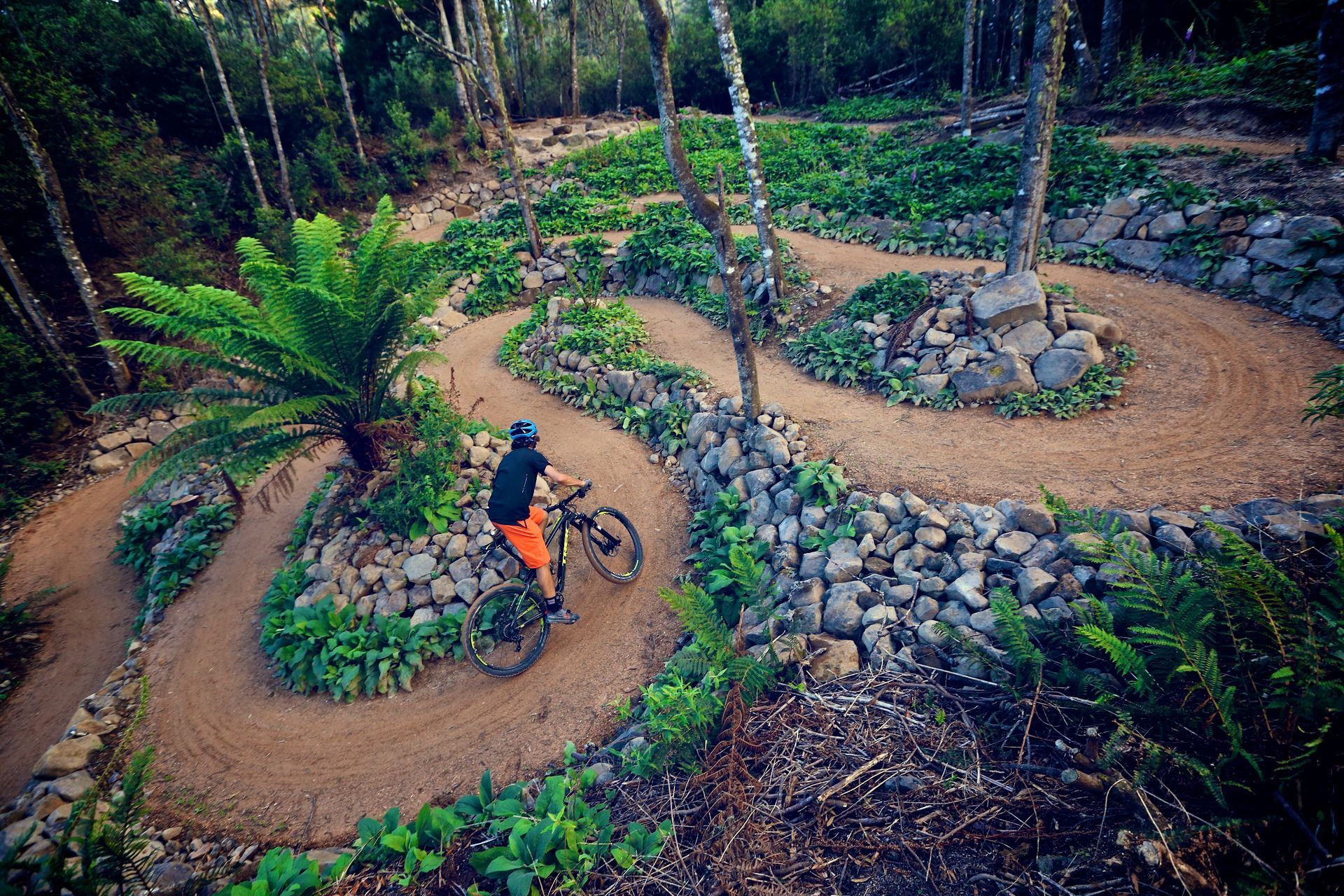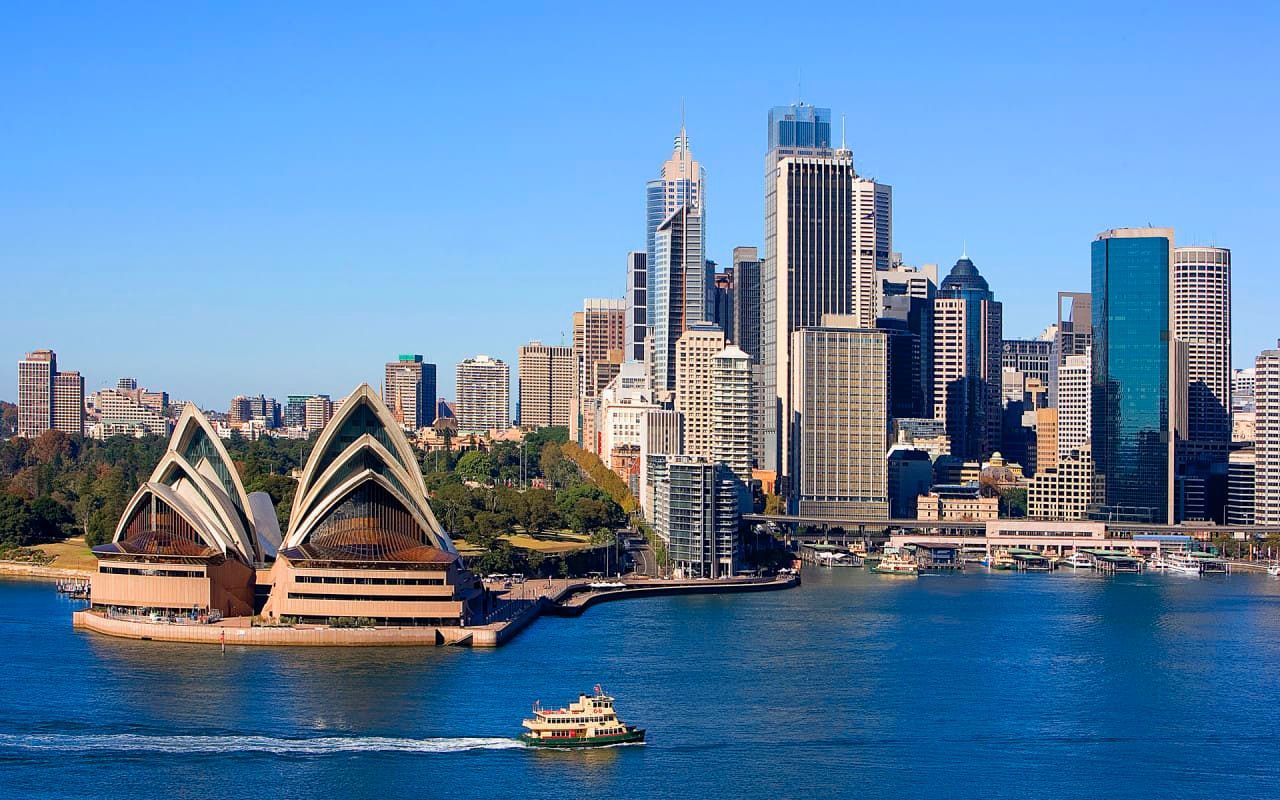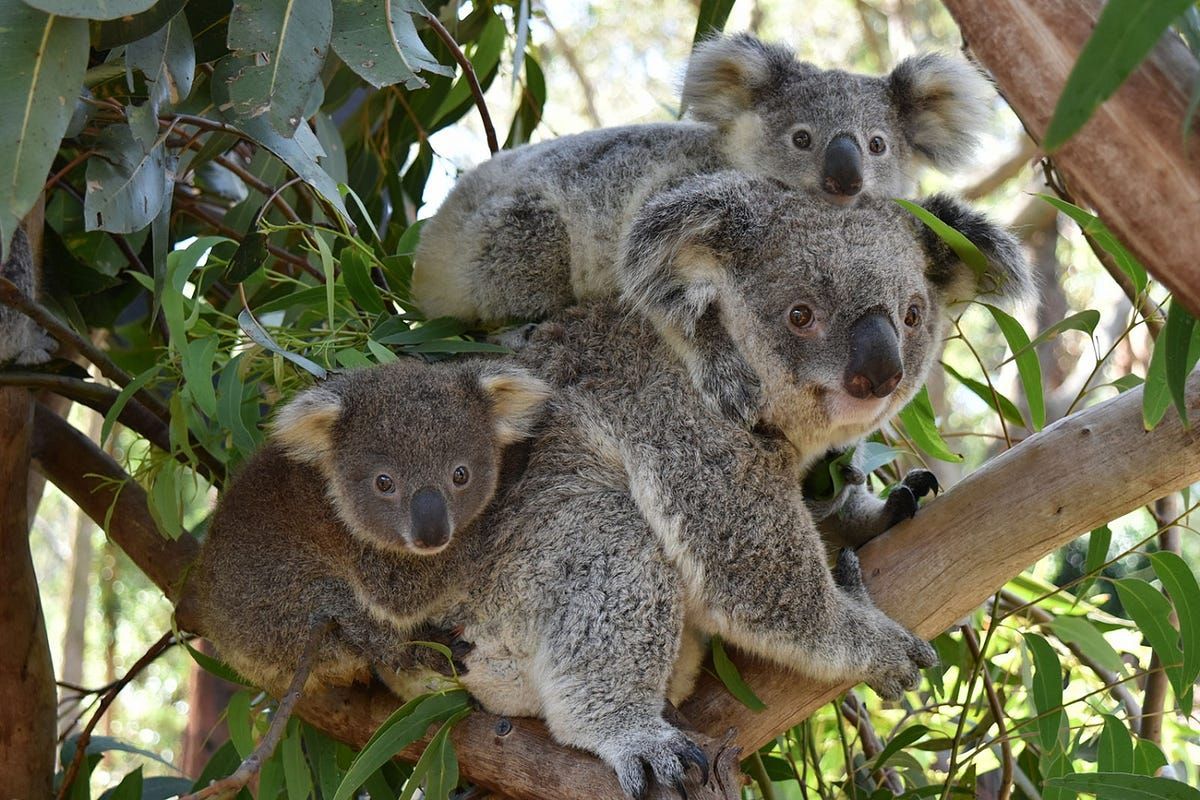To share
Discover why Blue Derby is Tasmania's fastest-growing mountain bike mecca.
Immerse yourself in lush forests, tackle exhilarating trails, and experience the warmth of local hospitality. Your unforgettable adventure starts here!

1. Blue Derby
Location and geography
Blue Derby is located in the northeastern part of Tasmania, Australia. The area is characterized by its lush temperate rainforests, rolling hills, and rugged terrain. Situated approximately 100 kilometers east of Launceston, Blue Derby encompasses the small town of Derby and its surrounding wilderness.
History of the area
Derby has a rich mining history dating back to the late 19th century. The town was once a thriving tin mining center, with the Briseis Mine being its most notable operation. However, as the mining industry declined, Derby faced economic challenges and a dwindling population.
Transformation into a mountain biking destination
In recent years, Blue Derby has undergone a remarkable transformation. Local authorities and mountain biking enthusiasts recognized the area's potential for outdoor recreation. Through careful planning and investment, Blue Derby has evolved into a world-class mountain biking destination, attracting riders from across the globe.
2. The Blue Derby Trail Network
Overview of trail system
The Blue Derby trail network consists of over 125 kilometers of purpose-built mountain bike trails. These trails wind through the stunning Tasmanian wilderness, offering riders diverse terrain and breathtaking scenery. The network is designed to cater to riders of all skill levels, from beginners to advanced.
Trail difficulty levels
Blue Derby's trails are categorized into different difficulty levels:
- Green: Suitable for beginners and families
- Blue: Intermediate trails with some technical features
- Black: Advanced trails for experienced riders
- Double Black: Expert-level trails with highly technical sections
This classification system helps riders choose trails that match their skill level and comfort zone.
Signature trails and features
Some of Blue Derby's most popular trails include:
- Blue Tier: A 42-kilometer descent through ancient rainforest
- Atlas: A flowing trail with berms and jumps
- Krushka's: A technical trail with rocky sections and challenging climbs
"Blue Derby's trail network offers something for every rider, from smooth flowing descents to technical rock gardens."
The trails incorporate natural features of the landscape, such as rock formations and forest canopies, to create a unique riding experience. Many trails also feature purpose-built elements like wooden bridges, berms, and jumps to enhance the riding challenge and enjoyment.
3. Planning Your Blue Derby Adventure
Best times to visit
Blue Derby offers year-round mountain biking opportunities, but certain seasons may be more suitable for your preferences:
- Spring (September to November): Mild temperatures and blooming wildflowers make for picturesque rides.
- Summer (December to February): Warm weather and long daylight hours, ideal for extended adventures.
- Autumn (March to May): Cooler temperatures and stunning foliage create a scenic backdrop.
- Winter (June to August): Cooler and wetter, but trails remain open for those prepared for the conditions.
Consider visiting during the shoulder seasons of spring and autumn for a balance of pleasant weather and fewer crowds.
Accommodation options
Blue Derby caters to various accommodation preferences:
- Camping: Derby Park offers powered and unpowered sites for those who enjoy the outdoors.
- Cabins and cottages: Cozy options available for small groups or families.
- Bed and Breakfasts: Experience local hospitality in charming, home-like settings.
- Hotels and motels: For those seeking more traditional accommodations.
Booking in advance is recommended, especially during peak seasons and events.
Local amenities and services
Derby, the hub of Blue Derby, provides essential services for visitors:
- Bike shops: Offering rentals, repairs, and gear sales.
- Cafes and restaurants: Refuel with local cuisine and coffee.
- General store: Stock up on supplies and snacks.
- Visitor information center: Obtain maps, trail information, and local advice.
4. Beyond Mountain Biking: Other Activities in Blue Derby
Hiking and bushwalking
Blue Derby's natural beauty extends beyond its bike trails:
- Little Blue Lake: A short walk to a striking, turquoise-colored lake.
- Mount Paris Dam: Explore the historic dam site and surrounding forest.
- Krushka's Trail: A challenging hike through diverse landscapes.
These trails offer opportunities to experience the area's flora and fauna up close.
Wildlife spotting
Tasmania's unique wildlife can be observed in and around Blue Derby:
- Platypus: Look for these elusive mammals in local rivers and streams.
- Wallabies and pademelons: Often spotted at dawn and dusk.
- Tasmanian devils: While rare, they inhabit the surrounding forests.
Remember to observe wildlife from a respectful distance and never feed wild animals.
Local cultural experiences
Immerse yourself in the rich history and culture of the Blue Derby region:
- Derby Schoolhouse Museum: Learn about the area's tin mining history.
- Tin Dragon Trail Cottages: Experience a piece of Chinese-Australian heritage.
- Local markets: Sample regional produce and handcrafted goods.
Engaging with these cultural experiences provides a deeper understanding of Blue Derby's past and present, enriching your visit beyond the trails.
5. Environmental Conservation and Sustainability
Trail maintenance and ecological impact
Blue Derby's trail network is carefully managed to minimize its impact on the surrounding environment. Regular maintenance ensures trails remain in good condition while protecting local flora and fauna. The trail design incorporates sustainable practices, such as proper drainage systems and elevated boardwalks in sensitive areas, to reduce erosion and preserve natural habitats.
Community involvement in conservation
Local residents play a crucial role in Blue Derby's conservation efforts. Community-led initiatives, such as volunteer trail maintenance days and native plant restoration projects, foster a sense of ownership and responsibility among residents. These efforts not only help preserve the natural beauty of the area but also strengthen the bond between the community and its environment.
Future sustainability initiatives
Blue Derby is committed to long-term sustainability. Planned initiatives include:
- Implementing renewable energy sources for trail facilities
- Expanding recycling programs throughout the trail network
- Developing educational programs to raise awareness about local ecosystems
- Collaborating with environmental experts to monitor and protect wildlife habitats
6. Blue Derby's Impact on the Local Economy
Tourism growth and job creation
The rise of Blue Derby as a mountain biking destination has significantly boosted tourism in the region. This influx of visitors has led to the creation of numerous jobs in various sectors, including hospitality, retail, and outdoor recreation. Local residents have found employment opportunities as trail guides, bike mechanics, and tour operators, contributing to a more diverse and robust local economy.
Local businesses and services
The increased tourism has spurred the growth of local businesses catering to visitors' needs. New accommodations, from boutique hotels to camping sites, have sprung up to meet demand. Restaurants, cafes, and bike shops have also flourished, offering services tailored to mountain biking enthusiasts. This economic diversification has breathed new life into the once-struggling region.
Regional development and infrastructure improvements
The success of Blue Derby has prompted investments in regional infrastructure. Improved roads, public transportation, and telecommunications have benefited both visitors and residents alike. These developments have made the area more attractive for businesses and individuals looking to relocate, further stimulating economic growth and community development.
Summary
Blue Derby has transformed Tasmania's northeast into a thriving mountain biking destination while maintaining a strong commitment to environmental conservation and sustainable practices. The positive impact on the local economy, coupled with community-led conservation efforts, showcases how outdoor recreation can drive regional development in a responsible manner. As Blue Derby continues to grow and evolve, it serves as a model for other regions seeking to balance tourism, economic growth, and environmental stewardship.
FAQs
How difficult are the trails at Blue Derby?
Blue Derby offers a range of trails suitable for various skill levels, from beginner-friendly green trails to challenging black diamond routes. The trail network is designed to provide options for riders of all abilities, ensuring everyone can enjoy the experience.
Can I rent a bike in Blue Derby?
Yes, several local businesses in Derby and nearby towns offer bike rentals. These shops provide a variety of mountain bikes suitable for the trails, along with necessary safety equipment. It's advisable to book in advance, especially during peak seasons.
Are there guided tours available?
Guided tours are available for those who prefer a more structured experience. Local operators offer tours ranging from half-day introductions to multi-day adventures. These tours often include equipment, transportation, and expert guidance on trail selection and riding techniques.
What should I pack for a trip to Blue Derby?
Essential items for a Blue Derby trip include:
- Appropriate riding gear (helmet, gloves, protective pads)
- Weather-appropriate clothing (layers are recommended)
- Water and snacks
- Basic first aid kit
- Trail map or GPS device
- Camera to capture the experience
Is Blue Derby suitable for families and beginners?
Blue Derby caters well to families and beginners. The trail network includes several easy, well-marked trails ideal for novice riders. Additionally, the town of Derby offers family-friendly amenities and activities, making it a suitable destination for riders of all ages and skill levels.




